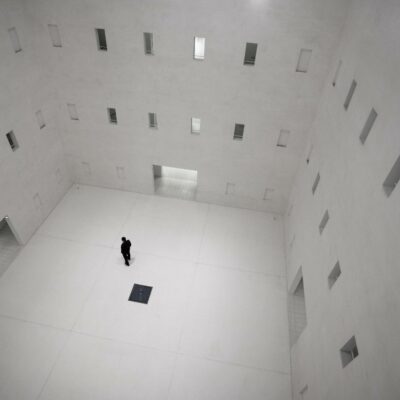
Organizations of all kinds have meetings, retreats, and development sessions. Meeting facilitation processes designed to get the most out of a meeting are invaluable, and much better than simply rolling through an agenda. In meetings of all kinds, it is essential for the people involved to have learned something sufficiently that it can be retained and retrieved post-meeting. You want a method to facilitate meetings that engages people, is designed with the needs of adult learners in mind, and can get through the material that needs to be covered. The method also needs to ensure enough space for people to reflect individually and together so that if they are called upon for solutions, the best solutions are brought out.
All in all, you want to use a method for meeting facilitation that closes the gap between people’s potential and results, during the meeting and in the follow up to the meeting. Whole Person Process Facilitation (WPPF) is a method of facilitating a meeting that can accomplish this with consistency, in complex systems, and in cross cultural groups.
Origins of Whole Person Process Facilitation
During the 1990’s, Birgitt Williams of Dalar International Consultancy couldn’t find a method for facilitating meetings that accomplished what she needed, particularly in working in cross cultural settings.
She found that some people in the group would grasp what was needed, and others didn’t. She found that after the meeting, there was quite a variation in interpretation of what was to be done and what had been agreed on.
Her conclusion was that the conditions for learning were not addressing the needs of the different adult learning styles. She developed WPPF and then field tested it for consistency including in cross cultural settings and in highly conflicted situations. Her field testing continued by training others in how to facilitate WPPF meetings and evaluating whether the results continued to be consistent. Adjustments to this meeting method were completed in 1999 when it was incorporated as a module of the Genuine Contact™ program, a synergistically blended program that supports a holistic approach to organizational success.
Whole Person Process Facilitation Today
Today, enterprises of all kinds have meetings online as well as face to face. Co-operation Partners of Dalar have successfully tweaked WPPF to work equally as well in online meetings as it does in face to face meetings. Of course for online meetings, some form of meeting software is needed and then WPPF is used as the meeting facilitation method.
WPPF also solves the challenge of improving any training module so that there is greater learning, retention and retrieval. When an existing content-driven training is offered within a Whole Person Process Facilitation container, amazing results occur. This is one example in which WPPF is used for two purposes. One purpose is learning facilitation. The second purpose is as a container or operating platform for existing material and teaching objectives.
Another application of WPPF that has two similar purposes is as a cohesive binder or container when a number of different meeting methods and tools are used during the same event. Without a cohesive binder/container such as WPPF, the use of a number of different methods and tools can feel disconnected to the participants. The consistency offered in a WPPF container, overcomes these challenges. This allows for the use of several appropriate meeting methods and tools as needed for results, while giving the participants an experience that is cohesive for them to enhance the learning and participation. A typical example is to use a WPPF container for a meeting of several days in length, and within this container to place a World Café method, an Open Space Technology method, and some elements of Appreciative Inquiry. Each has their purpose and adds value.
Elements of Whole Person Process Facilitation
In facilitating a WPPF meeting, the facilitator pays attention to:
- Creating an accepting rather than defensive climate. Placement of chairs, role of food, other décor, attitude and responses.
- Being conscious of the implications of actions and behaviors of the facilitator in every moment.
- Starting with an opportunity for the persons involved to transfer into the process, rather than the more superficial role of the typical icebreaker.
- Hopes and fears as a way of identifying objectives and possible barriers.
- Adult learning styles using the Learning Style Inventory.
- Right brain + Left Brain + easily connecting integrated use of the two = whole brain learning and problem solving.
- Bridging between different segments.
- Varying the levels the facilitator works on – in front of group, with group, apart from group.
- Maximizing energy of the group by doing activities singularly, in pairs, triads, fours, whole group. The facilitator is adept at how and when to use each of these and how to keep people engaged and the energy high throughout the meeting.
- Making the most of intuitive and intellectual knowledge of the people gathered, both individually and collectively.
- Evaluation that is useful and also part of the ongoing learning experience, with a focus of looping back to results in relation to the hopes and fears that had been expressed.
A facilitator using WPPF stays with a basic design that is carefully planned, yet is flexible enough to make adjustments to meet the needs of the group and to ensure that the group works towards the outcomes it has stated as its objectives for meeting.
Track Record of Success
Whole Person Process facilitated meetings have a proven track record for success in:
- strategic planning including implementation plans
- visioning including identification of key strategic directions
- policy development and implementation strategies including procedural protocols
- development of business ethics including implementation plans
- development of strategies and implementation plans for successful communication, excellent staff morale, high level quality of work life, excellent patient/client/customer service, improved labor/management relations, successful curriculum design, successful work process redesign
- revitalization of congregational life
- addressing gender issues
- addressing diversity issues
- finding solutions to violence and conflict in the workplace










Leave a Reply
You must be logged in to post a comment.